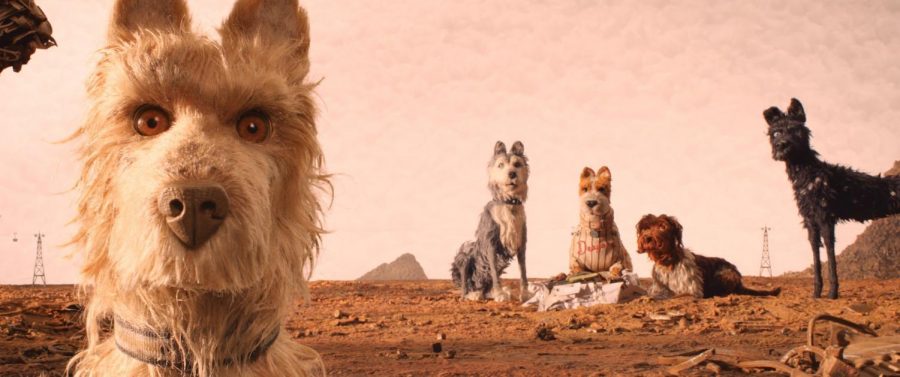Garner: These are some good dogs in ‘Isle’
Wes Anderson uses puppets and stop-motion animation to bring the dogs in ‘Isle of Dogs’ to life.
One of the earliest known interactions between humans and canines dates back to 12,000 BC, where the remains of an elderly man were found buried with a five-month-old puppy in now modern-day Israel.
Dogs have been a staple of human civilization for many centuries now, and that same association holds true for their place in human culture. Pablo Picasso had a dog. Wagner had a dog. It must be assumed that Wes Anderson is also in possession of a dog. His latest film, “Isle of Dogs,” is a lovely and beautifully crafted tribute not only to man’s best friend, but also Japanese culture and tradition as well.
Set in a world where all dogs in Japan have been banished to Trash Island due to a viral outbreak of “Dog-Flu,” “Isle of Dogs” follows a group of exiled canines led by Chief (Bryan Cranston) as they assist boy pilot Atari Kobayashi in his search for his banished dog Spots.
The film has a fairy-tale like quality to it, as if it were being told around a campfire or by an elder. Partially this is due to the subject matter — talking dogs and the streak of the fantastic that runs through the film, but this idea is also built by the beautifully handcrafted stop motion animation that the film was constructed with.
Delicately crafted puppets and people populate Anderson’s vision of Japan, a brightly colored and eye-popping locale whose bright reds and stark whites add up to a dazzling dream. Clouds of cotton act as the cartoon-esque dust up from a scuffle; stop-motion animation affords the animators the human-like picadilloes and ticks that make movement so unique. Each frame of the film has an attention to detail not often seen in animated films or even live-action ones. It’s a product of passion.
Some movies construct a world and part of their appeal lies in that element of worldbuilding. “Isle of Dogs” is one of those films. I felt as if I could stay in this world forever, watching these dogs and their adventures as they journeyed across this otherworldly Trash Island.
The interweaving of Japanese culture and Anderson’s own fabricated world occurs almost seamlessly. There are still the usual Anderson aesthetic touches — symmetrical framing; a clean color palette; the clever brand of deadpan humor that defines his approach; but there’s also a wider and more universal appeal present for those who don’t normally gravitate towards Anderson’s films.
Recently, there have been attacks leveled against the film, accusing it of appropriating Japanese culture. I’ve always imagined these remarks coming from the same group of people who find “Fargo” disrespectful of the culture in that part of America. It’s a fundamental misunderstanding of how the culture operates within the context of the film. Much like the aforementioned “Fargo,” “Isle of Dogs” use of a different culture within the narrative symbolizes a deep appreciation of that culture.
Obviously influenced by the legendary litany of Japanese animation, “Isle of Dogs” acts as a loving tribute to that historic style, not as a parody. While there are jokes made against some aspects of that culture (haikus in particular), I never got the impression that Anderson was reviling against that part of the world, but only expressing reverence. The heroes and villains of this film are Japanese. They are people. To suggest otherwise through an artificial storytelling deference is hypocritical and more insulting than the original attacks against the film.
“Isle of Dogs” is Anderson’s second animated feature, following “Fantastic Mr. Fox.” Yet, it proves that that first outing was no fluke, proving himself to be just as adapt as animated filmmaking as live-action. “Isle of Dogs” is a fairy tale transposed to the modern age, and with it comes all of the whimsy and effervescent nature of those types of stories. It is a film that makes a world so lovingly and so convincingly that you may wish it was a world of your own.












